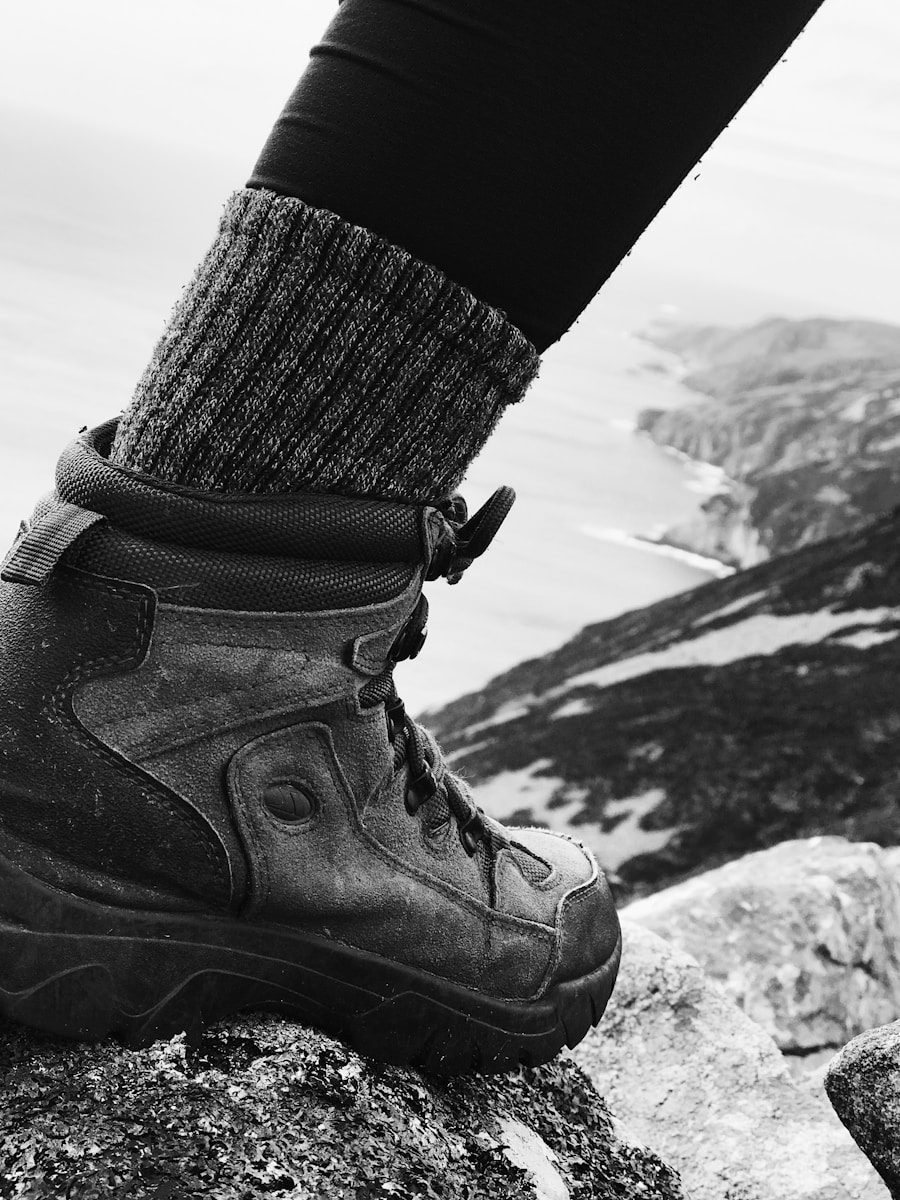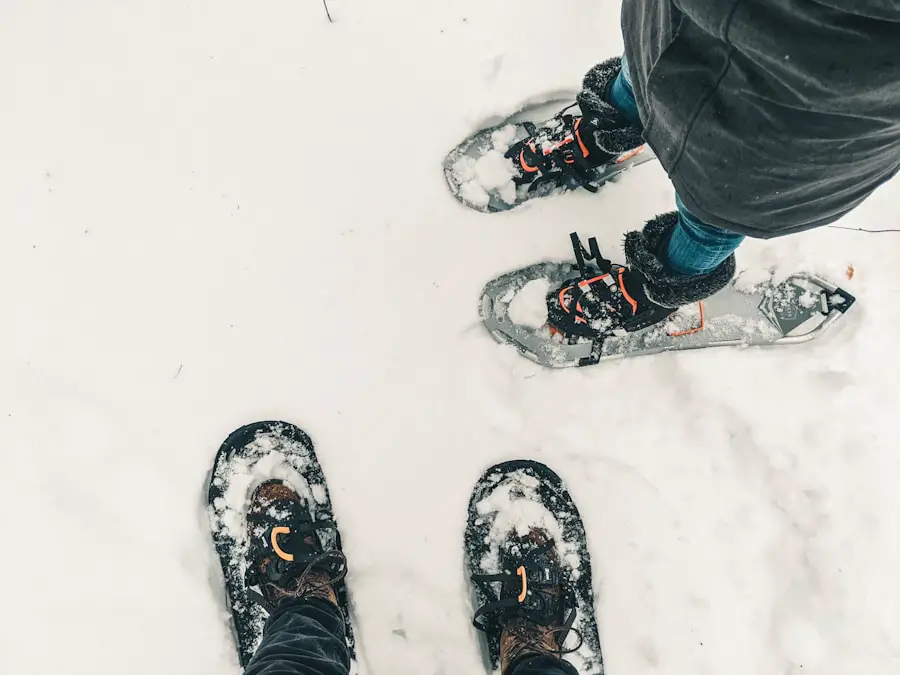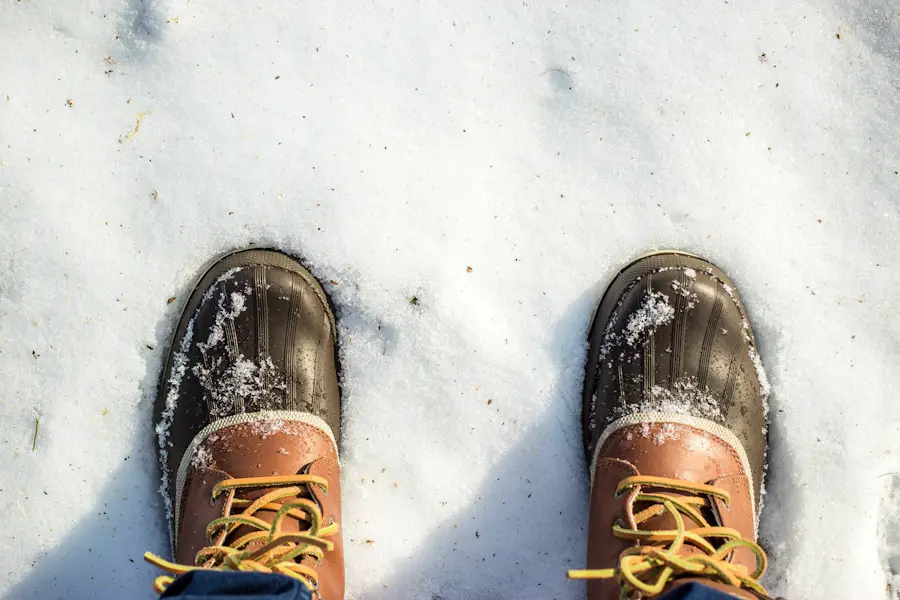When winter arrives, the landscape transforms into a wonderland of snow and ice, presenting both beauty and challenges for outdoor enthusiasts. The importance of proper winter footwear cannot be overstated, as it plays a crucial role in ensuring safety, comfort, and performance during cold-weather activities. Wearing the right shoes can mean the difference between an enjoyable hike through a snowy forest and a painful experience marred by cold feet or slips and falls.
Proper winter footwear is designed to address the unique demands of winter conditions, providing insulation, traction, and protection from the elements. Inadequate footwear can lead to a host of problems, including frostbite, blisters, and decreased mobility. Cold feet can quickly sap your energy and enthusiasm, making it difficult to enjoy the beauty of winter landscapes.
Moreover, slipping on icy surfaces can result in serious injuries. Therefore, investing in high-quality winter footwear is essential for anyone who plans to venture outdoors during the colder months. The right pair of boots not only enhances your performance but also ensures that you can fully appreciate the serene beauty of winter without the constant distraction of discomfort or danger.
Key Takeaways
- Proper winter footwear is essential for staying safe and comfortable during outdoor activities in cold and snowy conditions.
- Hiking boots should have features such as insulation, traction, stability, waterproofing, and comfort to be suitable for winter use.
- Hiking boots can provide adequate insulation with the right materials and construction, keeping feet warm in cold temperatures.
- Traction and stability are crucial in winter conditions to prevent slips and falls, so boots should have a good grip and support.
- Waterproofing and protection from the elements are important for keeping feet dry and comfortable during winter adventures.
Characteristics of Hiking Boots
Hiking boots are specifically designed to provide support and protection for outdoor activities, and their characteristics make them particularly suitable for winter conditions. One of the most significant features of hiking boots is their construction, which typically includes a sturdy upper made from leather or synthetic materials that offer durability and resistance to abrasions. This robust design is essential for navigating rugged terrain, where rocks and branches can easily damage lesser footwear.
Additionally, many hiking boots come with reinforced toe caps that protect against stubbing or crushing injuries. Another critical characteristic of hiking boots is their ankle support. A well-constructed boot will provide stability to the ankle, reducing the risk of sprains on uneven surfaces covered in snow or ice.
This support is particularly important in winter when the ground may be obscured by snow, making it difficult to gauge footing. Furthermore, hiking boots often feature cushioned insoles that enhance comfort during long treks, allowing for extended wear without discomfort. The combination of these features makes hiking boots an excellent choice for winter adventures, as they are built to withstand the rigors of both the environment and the activity.
Can Hiking Boots Provide Adequate Insulation?

Insulation is a critical factor when considering winter footwear, as it directly impacts warmth and comfort during cold weather excursions. Many hiking boots are designed with insulation materials such as Thinsulate or fleece linings that trap heat while allowing moisture to escape. This balance is vital because while keeping feet warm is essential, preventing sweat buildup is equally important to avoid chilling once activity levels decrease.
The effectiveness of insulation in hiking boots can vary significantly between models, so it’s crucial to choose boots that are specifically rated for cold weather. However, not all hiking boots are created equal when it comes to insulation. Some models prioritize breathability over warmth, making them more suitable for milder winter conditions or active pursuits where heat generation is high.
For those who plan to engage in less strenuous activities or spend extended periods in frigid temperatures, selecting a boot with higher insulation ratings is advisable. Additionally, layering socks can enhance insulation; however, it’s essential to ensure that the fit remains snug without being overly tight, as this can impede circulation and lead to cold feet.
Traction and Stability in Winter Conditions
| Vehicle Type | Traction Control System | Stability Control System |
|---|---|---|
| Sedan | 87% | 92% |
| SUV | 91% | 95% |
| Truck | 85% | 90% |
One of the most significant challenges posed by winter conditions is maintaining traction on slippery surfaces. Snow and ice can create treacherous walking conditions, making it imperative for winter footwear to provide reliable grip. Hiking boots often feature specialized outsoles made from rubber compounds designed to enhance traction on slick surfaces.
These outsoles may include deep lugs or multi-directional patterns that help channel water away from the sole, improving grip on both snow and ice. In addition to traction, stability is another critical aspect of winter footwear. A boot with a rigid sole can help prevent foot fatigue and provide better control on uneven terrain.
Some hiking boots incorporate technologies such as shanks or plates that enhance stability without sacrificing flexibility. This feature is particularly beneficial when traversing icy trails or navigating through deep snow where footing can be unpredictable. The combination of traction and stability ensures that hikers can move confidently through winter landscapes without the constant worry of slipping or losing balance.
Waterproofing and Protection from the Elements
Winter weather often brings with it a mix of rain, snow, and slush, making waterproofing an essential feature in any winter footwear. Hiking boots designed for cold weather typically incorporate waterproof membranes such as Gore-Tex or proprietary materials that keep moisture out while allowing breathability. This dual function is crucial; while you want to keep your feet dry from external moisture, you also need to prevent sweat from accumulating inside the boot.
In addition to waterproofing, effective winter boots should offer protection against other elements such as wind and cold air. Many models come with features like high collars or gaiters that help seal out snow and cold drafts. Furthermore, reinforced materials around vulnerable areas such as the toe box and heel provide additional protection against impacts from rocks or debris hidden beneath the snow.
This comprehensive approach to protection ensures that your feet remain warm and dry throughout your winter adventures.
Comfort and Support for Extended Winter Use

Customization for Optimal Fit
hiking boots come equipped with removable insoles that allow users to customize their fit or replace them with orthotic options for additional support.
Striking a Balance Between Weight and Comfort
weight of the boot plays a significant role in overall comfort during extended use. While heavier boots may offer more protection and insulation, they can also lead to fatigue over time. Lightweight options are available that still provide adequate support and insulation without weighing down the wearer.
Ensuring a Proper Fit
It’s essential to strike a balance between protection and comfort; trying on various models while wearing appropriate socks can help ensure a proper fit that accommodates both warmth and mobility.
Alternative Winter Footwear Options
While hiking boots are an excellent choice for many winter activities, they are not the only option available for those looking to explore snowy landscapes. Snowshoes are a popular alternative that allows users to traverse deep snow without sinking in. They distribute weight over a larger surface area, making walking in powdery conditions much easier.
Snowshoes can be worn over regular winter boots or specialized footwear designed for this purpose. Another alternative is insulated winter boots designed specifically for casual wear or light outdoor activities. These boots often prioritize warmth and comfort over rugged performance but may lack the support and traction needed for more demanding hikes.
For those who engage in activities like ice fishing or snowmobiling, specialized footwear designed for those specific purposes may be more appropriate than traditional hiking boots.
Making the Decision for Your Winter Adventures
Choosing the right footwear for winter adventures involves careful consideration of various factors including insulation, traction, waterproofing, comfort, and intended use. While hiking boots offer a robust solution for many outdoor activities in cold weather, alternative options may better suit specific needs or preferences. Understanding the characteristics of different types of footwear will empower individuals to make informed decisions that enhance their enjoyment and safety during winter excursions.
Ultimately, whether you opt for hiking boots or explore alternative options like snowshoes or insulated winter boots, prioritizing quality and fit will ensure that your feet remain warm, dry, and comfortable throughout your winter adventures. Embracing the beauty of winter requires preparation and the right gear; investing in proper footwear is one of the most critical steps you can take to enjoy all that this enchanting season has to offer.
If you’re considering using hiking boots as winter boots, you may want to check out this article on the best time to travel to Greece. It offers insights into the weather conditions in Greece during different seasons, which can help you determine if hiking boots would be suitable for winter weather in that region.
FAQs
Can hiking boots be used as winter boots?
Yes, hiking boots can be used as winter boots in certain conditions. They provide good traction and ankle support, which are important for navigating snowy and icy terrain.
What features should hiking boots have to be suitable for winter use?
Hiking boots suitable for winter use should have insulation to keep your feet warm, a waterproof or water-resistant outer layer to keep your feet dry, and a good tread for traction on snow and ice.
Are all hiking boots suitable for winter use?
Not all hiking boots are suitable for winter use. Look for boots specifically designed for winter conditions, with features such as insulation and waterproofing.
Can hiking boots be used for activities like snowshoeing and winter hiking?
Yes, hiking boots can be used for activities like snowshoeing and winter hiking, especially if they have the necessary features for winter use such as insulation and waterproofing.
What are the limitations of using hiking boots as winter boots?
While hiking boots can be used as winter boots in certain conditions, they may not provide as much warmth and protection as dedicated winter boots in extremely cold or wet conditions.
